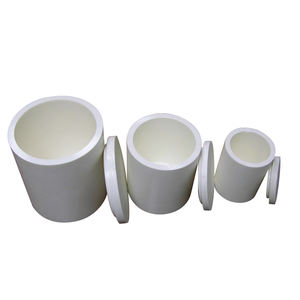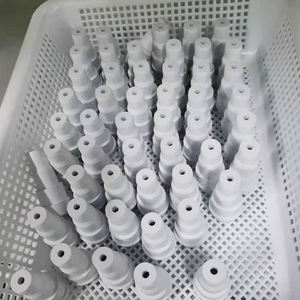Discover Premium Ceramic Products | Durability & Elegance United | Advanced Ceramics
PRODUCT PARAMETERS
Description
Introduction to Alumina Ceramics
Alumina ceramics are known for their high hardness, wear resistance, corrosion resistance, good electrical insulation and high temperature stability. According to the different alumina content, it can be divided into different grades, such as 95 porcelain, 99 porcelain, etc., among which 99 porcelain refers to ceramic materials with an alumina content of 99%. As the alumina content increases, its mechanical strength and electrical insulation properties will also increase accordingly.
Characteristics of Alumina Ceramics
High Hardness: Alumina ceramics have extremely high hardness, which makes it very wear-resistant and suitable for manufacturing abrasive tools and parts that require wear resistance.
Wear resistance: Due to its high hardness, alumina ceramics show excellent wear resistance and are suitable for manufacturing parts for long-term use.
Corrosion resistance: Alumina ceramics have good resistance to most acids and alkalis, making them widely used in the chemical industry.
Good electrical insulation: As an excellent electrical insulating material, alumina ceramics are widely used in electronic and electrical products.
High temperature stability: Ability to withstand extremely high temperatures without significant physical or chemical changes, which makes it an ideal choice for applications in high temperature environments.
Biocompatibility: In the medical field, certain grades of alumina ceramics are used to make medical devices such as artificial joints due to their good biocompatibility.
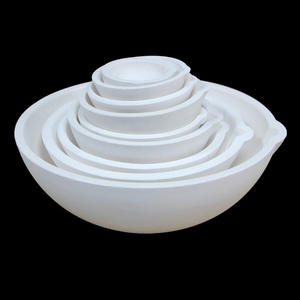
(Electronic Al2O3 Ceramic Alumina PCB Substrate)
Specifications of Electronic Al2O3 Ceramic Alumina PCB Substrate
The Electronic Al2O3 Ceramic Alumina PCB Substratum uses light weight aluminum oxide as the primary material. The alumina content generally gets to 96% or 99%. This makes sure strong efficiency in high-temperature and high-stress atmospheres. The substratum gives superb thermal conductivity. Worths range between 24 and 28 W/mK. This is more than standard products like FR-4. Warmth spreads effectively during procedure. Overheating risks in circuits decline. The thermal growth coefficient matches silicon chips. Stress at link factors minimizes. Element security enhances.
Electric insulation is a vital feature. The dielectric strength gets to 15– 20 kV/mm. Present leak remains minimal also under high voltages. High-frequency applications take advantage of low signal loss. The dielectric constant stays stable at around 9.8. The loss tangent stays listed below 0.0004. Signal integrity stays reputable.
Mechanical toughness is high. The Vickers hardness ranges from 15 to 18 Grade point average. Put on resistance expands the substratum’s life-span. Surface therapies include polishing, coatings, or metallization. These options adjust to soldering or bonding requirements. Density alternatives array from 0.2 mm to 3.0 mm. Custom-made sizes fit particular layout requirements.
The substratum handles extreme temperatures. It operates reliably up to 1600 ° C. Thermal shock resistance stops cracking during rapid temperature level shifts. Chemical stability is another benefit. Acids, antacid, and destructive gases create minimal damage. The product suits rough commercial environments.
Applications consist of power electronic devices, RF components, LED illumination, and automotive systems. High-power gadgets utilize it for reliable warmth monitoring. High-frequency circuits rely upon its secure electrical residential properties. Aerospace and clinical equipment take advantage of its durability. The substrate fulfills demands for precision and dependability in sophisticated modern technologies.
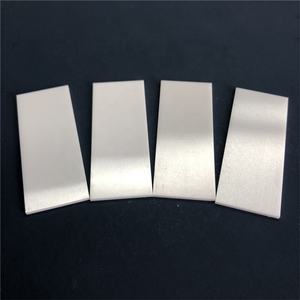
(Electronic Al2O3 Ceramic Alumina PCB Substrate)
Applications of Electronic Al2O3 Ceramic Alumina PCB Substrate
Digital Al2O3 ceramic alumina PCB substrates serve several markets. These substratums deal with heats well. They work in atmospheres where normal products stop working. High thermal conductivity makes them excellent for warm administration. Electronics produce warm throughout operation. Alumina spreads out heat uniformly. This protects against damage to elements. Devices last much longer as a result of this residential or commercial property.
High-power electronic devices make use of these substratums usually. Power components and inverters require solid insulation. Alumina offers exceptional electrical insulation. It quits existing leak. This maintains systems safe. High voltage applications depend on this function. Breakdown dangers drop dramatically.
LED illumination systems gain from alumina PCBs. LEDs produce warmth during use. Warm buildup shortens LED life. Alumina substratums move warmth away efficiently. Light outcome stays constant. Power waste reduces. Maintenance prices drop.
Automotive electronics call for durable materials. Alumina resists vibration and shock. Autos face harsh conditions daily. Engine control systems and sensing units make use of these PCBs. Temperature swings in engines do not influence performance. Dependability improves safety and security.
RF and microwave tools make use of alumina substrates. Signal loss matters in interaction systems. Low dielectric loss in alumina preserves signal high quality. High-frequency applications like radar and antennas perform much better. Security at high frequencies is important.
Clinical tools needs accuracy. Alumina PCBs take care of sensitive electronic devices. Imaging makers and screens need stable operation. Biocompatibility makes certain security in clinical atmospheres. Devices feature without interference. Individual safety stays a top priority.
Aerospace applications require materials that endure extremes. Alumina withstands high pressure and radiation. Avionics and satellite systems use these substratums. Efficiency remains reputable in harsh problems. Goal success depends on regular operation.
Industrial systems use alumina for heavy-duty jobs. Electric motor drives and power supplies deal with constant stress and anxiety. Alumina resists chemical deterioration. Deterioration lower. Long-term usage ends up being possible. Assembly line avoid constant downtime.
Alumina substratums fit renewable resource systems. Solar inverters and wind turbines require effective warmth control. Power conversion procedures produce heat. Alumina manages this properly. System performance improves. Energy output continues to be stable.
Company Introduction
Advanced Ceramics founded on October 17, 2014, is a high-tech enterprise committed to the research and development, production, processing, sales and technical services of ceramic relative materials and products.. Since its establishment in 2014, the company has been committed to providing customers with the best products and services, and has become a leader in the industry through continuous technological innovation and strict quality management.
Our products includes but not limited to Silicon carbide ceramic products, Boron Carbide Ceramic Products, Boron Nitride Ceramic Products, Silicon Carbide Ceramic Products, Silicon Nitride Ceramic Products, Zirconium Dioxide Ceramic Products, Quartz Products, etc. Please feel free to contact us.(nanotrun@yahoo.com)

Payment Methods
T/T, Western Union, Paypal, Credit Card etc.
Shipment Methods
By air, by sea, by express, as customers request.

5 FAQs of Electronic Al2O3 Ceramic Alumina PCB Substrate
Electronic Al2O3 ceramic alumina PCB substrates are widely used in high-performance circuits. Here are 5 common questions about them.
What is Al2O3 ceramic alumina PCB substrate? It is a ceramic base material made from aluminum oxide. It supports electronic circuits needing high thermal performance. The material combines ceramic and metal layers. This structure helps manage heat and electricity efficiently.
Why choose Al2O3 ceramic over other materials? It handles extreme temperatures better. It resists wear and chemicals. It insulates electricity well. Heat spreads evenly across its surface. Circuits last longer because of these traits.
Where is Al2O3 ceramic alumina PCB substrate used? It works in LED lighting, power converters, and RF devices. High-power electronics like motor drives use it. Harsh environments like aerospace systems rely on it. Medical tools needing precision also apply this material.
How does Al2O3 ceramic differ from traditional PCB materials? Regular PCBs use fiberglass or plastic. These melt or warp under high heat. Al2O3 ceramic stays stable. It carries heat away faster. This prevents overheating in compact devices.
What should users know when handling Al2O3 ceramic substrates? The material is brittle. Avoid dropping or bending it. Clean surfaces before attaching components. Use specialized adhesives for metal layers. Follow thermal cycling guidelines to prevent cracks.
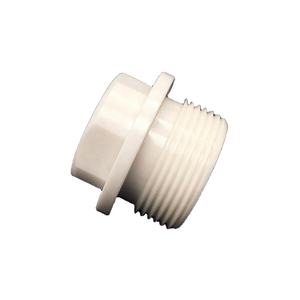
(Electronic Al2O3 Ceramic Alumina PCB Substrate)
REQUEST A QUOTE
RELATED PRODUCTS
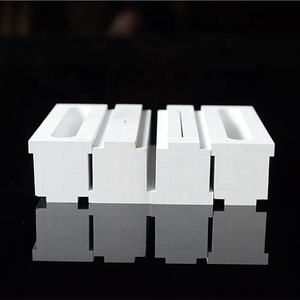
Customized Top Quality Wear Resistant Corrosion Resistant Alumina Zirconia Ceramic Industry Parts
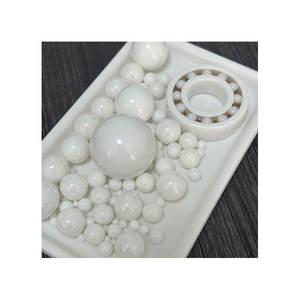
Wear-resistant Alumina Ceramic Sheets Industrial Wear-resistant Ceramics Alumina Ceramics
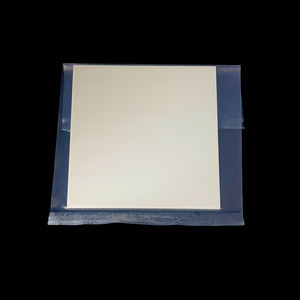
Porous Semiconductor Ceramics/insulating Electronic Ceramics/995 Alumina Ceramics
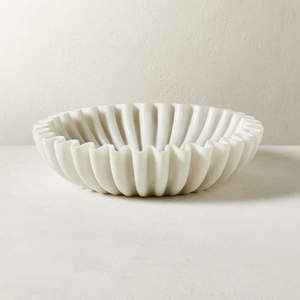
Polished Al2O3 Alumina Ceramic Plate
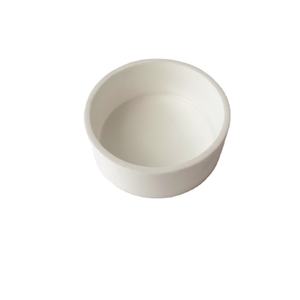
99% 99.7% Alumina Ceramic Tube For Thermocouple Ceramic Tube For Thermocouple
